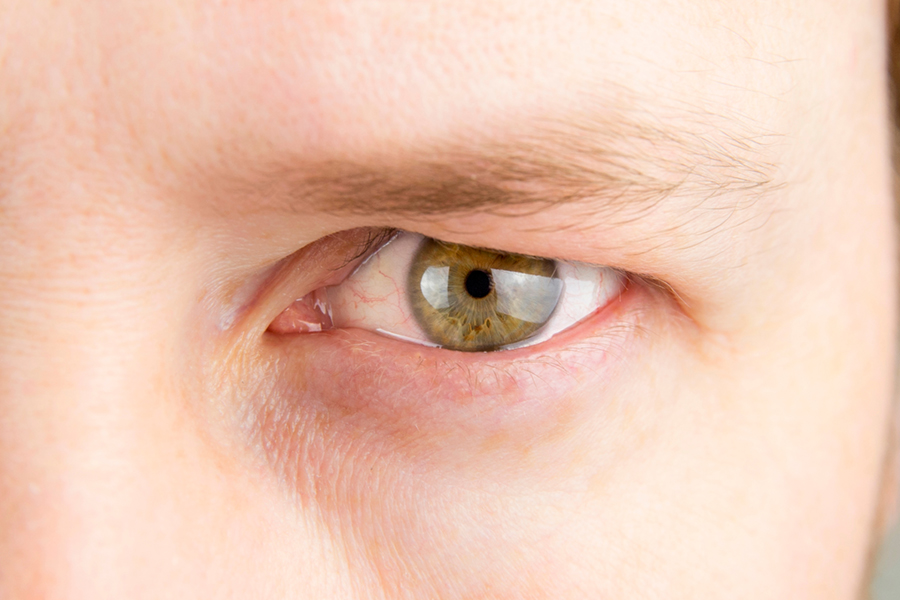
The office evaluation and surgical treatment of many different eyelid conditions is covered by insurance if the eyelid condition is causing secondary ocular problems (a scratched cornea from a droopy lower eyelid) or is having a significant impact on the vision. For example, a droopy upper eyelid that covers half of the pupil and causes difficulty with reading, will justify medically necessary surgery to lift it up to a better position. This condition is called blepharoptosis (ptosis). Another commonly encountered upper eyelid problem is called dermatochalasis. This is when enough upper eyelid skin (and often fat) has accumulated on the eyelids that it blocks the vision or causes an irritation of the eyelid skin (dermatitis). The typical patient has skin touching the upper eyelid lashes or skin even hanging over the edge of the upper eyelid, making the eye appear smaller. Surgery to remove some excess skin/muscle/fat is called a blepharoplasty and is most commonly performed in an outpatient surgical facility. Surgery for various lower eyelid conditions, such as turning in of the eyelid (entropion) and turning out of the eyelid (ectropion), is always covered by insurance as these conditions affect the comfort of the eye, which is turn often affects the vision.
For upper eyelid surgery to be covered by insurance, the proper documentation needs to be in place. After a consultation with the surgeon and clear documentation of the patient’s specific complaints, the patient returns for a test that plots the peripheral vision (visual field test). This test has two components, untaped and taped. With the eyelid in position at rest (untaped), the peripheral vision is tested. The upper eyelid/skin is then taped up and the test is repeated. A certain number of degrees of visual blockage by the eyelids must be documented and this visual blockage must improve with taping up of the eyelid. Further documentation with photographs and a detailed exam by the physician are required for insurance purposes. With commercial insurance, the results of the testing and exam are submitted for review by the insurance company prior to performing the surgery. This process is called obtaining prior authorization.
Lower eyelid surgery for “bags,” excess skin, etc. is almost always considered cosmetic and can be performed at the same time as the upper eyelid surgery. Having both done at the same time saves the patient some money on the surgical facility fee.
For more information of the specific eyelid conditions referenced above, please be sure to read the section on “medical reconstructive surgery” and “eyelids.” Before-and-after photos of various eyelid conditions are also available on the website and in the office during your consultation with Dr. Zamecki-Vedder.
